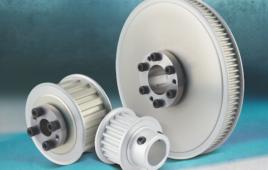
Fortress Technology installed this twin aperture Stealth metal detector and dual-lane Raptor 200 checkweigher to integrate with a dual-head VFFS bagging system for the world’s premium dairy producers.
When a leading North American dairy plant needed significant space and cost savings for packaging its shredded cheese, it worked with Fortress Technology to find a solution. The Fortress Technology team custom-engineered the twin aperture Stealth metal detector and dual-lane Raptor 200 checkweigher.
The twin lane conveyor configuration consolidates a single metal detector divided into two apertures and two independent, weight-verification Raptor checkweighers for optimized quality control. Each technology and lane has its own air-blast reject mechanism to isolate metal contaminants and weight rejects, helping to reduce product waste by over 50%. Measuring 10-ft in length, Fortress also integrated a radius conveyor into the metal detector infeed.
For the producer of some of the world’s most iconic cheese brands, compromising on metal detection sensitivity was not an option. Explaining the benefits of the multi-aperture metal detector concept, Fortress Technology spokesperson Eric Garr explained, “Compared to the alternative multi-lane contaminant detection and combination systems on the market, the high-spec Fortress multi-aperture system was engineered specifically to ensure that that there was no trade-off in terms of performance and metal detection sensitivity. One of the key benefits of a twin aperture system is the halving of waste caused by rejects.”
The special dual-lane version of Fortress Technology’s multi-aperture metal detector comprises a single unit split into two smaller dedicated apertures for each lane that act as independent metal detectors. Optimal metal detection sensitivity of the two compact apertures — measuring 4-in. by 10-in. — means that the packs pass individually through the center point of the metal detector.

A single metal detector is split into two individual apertures for each lane to ensure metal detection sensitivity isn’t compromised.
Fully integrated with the dairy plants’ upstream and downstream equipment and matching the 120-140 ppm output speed of the dual-head VFFS bagging system, the compact geometry of the customized radius conveyor facilitates the positioning and orientation of product packs as they round the corner towards the metal detector. Providing optimal spacing between product packs as they are presented to each metal detector aperture helps to avoid congestion, bottlenecks, and flexible packaging formats overlapping — leading to distorted weight verification checks.
Each lane is programmed to run independently; the bespoke design helps minimize interruption to the packing process during product switchovers. Additionally, the design gives the plant increased inspection and weight verification capacity, as two different product lines, pack sizes, or SKUs can be run simultaneously adjacent to each other.
Air blast nozzles between the two outfeed conveyors efficiently and independently remove contaminated product into lockable reject bins equipped with reject confirmation and bin full sensors. “For lighter weight packaged applications like shredded cheese, an air blast reject is the most efficient and has fewer moving parts. Contaminated products are instantly removed off the conveyor belt without disrupting production,” stated Garr. Fortress would typically suggest using a pusher or retracting belt mechanism with heavier products.
Delivering dynamic weight monitoring with minimal customizations to existing product feed and packing lines, the hygienic dual-lane design also targets operational inefficiencies, notably upstream product giveaway, non-conforming food packs, and packaging waste.
Two packs can pass over two Raptor load cells to weigh, analyze, capture, and report data in milliseconds. For ease of integration, air blast nozzles reject out-of-weight specification products with minimal operative intervention.
To ensure absolute traceability and compliance with retailer Codes of Practice and QA protocols, both the metal detector and Raptor checkweigher capture live OEE data. “By gathering live production information from each lane independently, the dairy group can establish the operational parameters and extract statistics most valuable to their business, for instance, volume, weight, inspection speed, rejects, or downtime,” added Garr.

The rising cost of real estate in North American production facilities is pushing demand for space-optimized machinery.
Equipped with Contact Reporter software, the dairy plant can export and convert time-stamped production data from their dual-aperture metal detector and integrate into readable formats with their existing quality control reporting system. Also available is the option to connect the checkweigher to the Contact 4.0 connectivity software. Auditor-friendly data reports are exported as either PDF or Excel files covering a specific production line or time interval. “Rather than monitoring machine performance manually, this level of cohesive reporting on a multi-lane system provides valuable upstream trend feedback to boost operational efficiencies,” said Garr.
Constructed to the highest food grade standards, the modular 200mm wide conveyor assembly, conveyor decks, and belts are all designed to be easily removed from the machine for deep sanitation and maintenance. In seconds, the conveyor belt can be removed and the belt tension and tracking are restored when clipped back into place.
With rent per square foot in North American industrial manufacturing plants currently averaging $6.36, this latest multi-lane combination metal detection and checkweighing solution shows the space-saving possibilities.
Fortress Technology
www.fortresstechnology.com
Filed Under: Uncategorized




